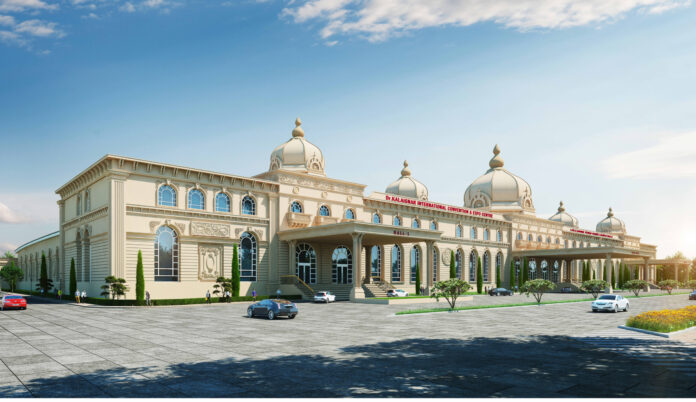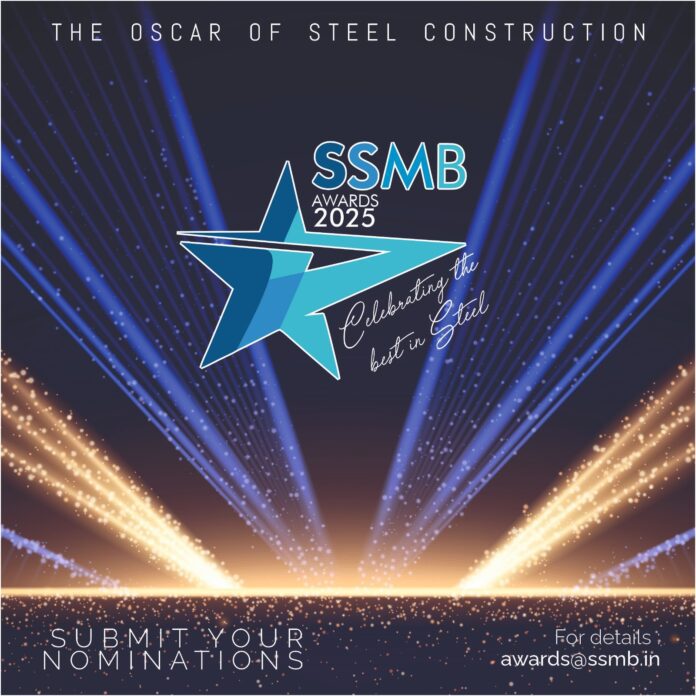Intro:
Rising from the heart of Chennai’s cultural landscape, the International Convention Centre stands as a modern testament to scale, identity, and engineering ambition. Conceived by Oscar, Ponni & Rahul Architects, the project redefines civic architecture in India, merging Dravidian symbolism with contemporary structural ingenuity. The Centre is not merely a venue; it is a landmark of transformation, a place where design becomes dialogue, and structure becomes a story of scale, culture, and innovation.
At its core, the Convention Centre was envisioned as a space of convergence, where functionality and flexibility co-exist with visual majesty. The architects prioritised adaptability across diverse event types, from global summits to cultural performances. This manifests in the hierarchy of spaces, an expansive main hall, smaller modular rooms, and generous dining and pre-function areas, all supported by robust back-of-house facilities.
The architectural narrative is defined by a monumental rhythm of arches, columns, and domes, evoking classical grandeur while serving modern programmatic needs. High ceilings, axial circulation, and generous public zones create both efficiency and spectacle.
“The design harmonizes purpose with pride, a place that accommodates thousands, yet feels cohesive and ceremonial, claims Architect Ponni Concessao.”
CULTURE, CLIMATE, AND CONTEXT
Chennai’s hot-humid climate and deep-rooted cultural identity profoundly shaped the Centre’s spatial character. The design integrates shaded courtyards, verandahs, and open terraces, ensuring natural ventilation and passive cooling. The domed roofline and deep-set fenestrations aid in thermal regulation while framing striking silhouettes against the city’s skyline.
Culturally, the design pays homage to Dravidian temple architecture, its domes recalling vimanas, its arcades echoing the mandapas of South Indian shrines. The symmetrical planning mirrors temple processional paths, grounding the building in a sense of sacred geometry.
“Every dome, every arch is a quiet dialogue with Chennai’s architectural soul.”
THE ICONIC PRESENCE: SCALE AS A STATEMENT
The International Convention Centre asserts itself as a civic landmark through scale, symmetry, and visual rhythm. Its dominant roofline of domes, each articulated in tiers, defines a skyline silhouette that is at once familiar and futuristic.
This monumental expression is anchored by grand porticos, sweeping entrance canopies, and generous internal volumes. The building’s axial symmetry recalls the disciplined geometry of Dravidian complexes — a contemporary manifestation of temple architecture’s spatial hierarchy.
“We wanted a form that doesn’t just host events but must inspire awe.”
SYMBOLISM AND ARCHITECTURAL NARRATIVE
Every visual element in the Convention Centre carries symbolic weight. The domes symbolise continuity and ascension, while the rhythm of columns evokes collective strength. The axial alignments guide processional movement, reinforcing the building’s ceremonial essence.
The architects drew upon the narrative of sacred architecture, interpreting traditional forms not as ornamentation but as structure. Each dome, like a modern vimana, represents aspiration; each corridor, a metaphor for community. The building’s symmetry becomes a cultural statement – balance as belief, and order as beauty.
THE ROLE OF STEEL: DEFINING VOLUME AND FREEDOM
Steel became the invisible framework that transformed architectural vision into built form. Its strength-to-weight ratio enabled vast column-free halls that are essential for multipurpose conventions, exhibitions, and performances.
The steel system also facilitated lightweight domes, allowing large, complex roof geometries that would have been impossible with traditional materials. Its prefabrication ensured precision, speed, and economy. Beyond form, steel contributed to sustainability through recyclability and minimal waste.
“Steel gave us freedom of span, of proportion, of imagination.”
STEEL ENABLED DESIGN INNOVATIONS
Certain features of the Convention Centre exist solely because of steel’s versatility. The expansive, unobstructed event halls are feats of engineering, spanned by long trusses that make visual drama possible. The roof domes, lightweight yet monumental, rest on skeletal steel frames that blend strength with sculptural grace.
Steel also enabled the integration of large MEP systems within the structural depth, maximising usable space and maintaining design integrity. These engineering decisions amplified both form and function, achieving structural efficiency and architectural poetry in equal measure.
CREATING MULTIFUNCTIONAL SPACES
The architects faced the challenge of designing a single structure that could adapt to countless purposes. Through strategic zoning and modular design, the Convention Centre accommodates conferences, exhibitions, performances, and banquets seamlessly.
The use of long-span steel trusses ensures flexibility of layout, while high ceilings and durable flooring support varied usage. Adjacent support blocks like kitchens, dining halls, and guest facilities are positioned for service efficiency without compromising public circulation.
“Adaptability is the new definition of permanence.”
CIRCULATION AND USER EXPERIENCE
The success of such a massive public facility lies in its ability to move people effortlessly. The design orchestrates circulation with multiple entry and exit points, dedicated zones for VIPs, public visitors, and service access.
Within, clear zoning, wide corridors, and vertically integrated circulation cores ensure a logical, fluid user journey. The vast lobbies double as transitional gathering spaces, while wayfinding remains intuitive through spatial hierarchy and consistent visual language.
Every movement from arrival to dispersal is choreographed with architectural precision, ensuring that scale never becomes confusion.
AESTHETIC REFINEMENT AND DETAILING
While monumental in scale, the Convention Centre is equally rich in detail. The tiered domes, ribbed surfaces, and sculpted cornices express craftsmanship, while arched colonnades and pilasters lend rhythm and balance.
Grand porticos, patterned paving, and landscaped forecourts elevate the sense of arrival, while varied window treatments and recessed façades create shadow play that softens the monumental scale.
The architecture’s cultural vocabulary finds modern articulation in its restrained material palette — a luminous interplay of stone textures, light tones, and rhythmic geometries.
“Grandeur is not about excess; it is about discipline in detail.”
EFFICIENCIES AND SUSTAINABILITY THROUGH STEEL
The project’s reliance on steel brought measurable structural, environmental, and operational efficiencies. The lightweight frame reduced foundation loads and material use, leading to cost savings and faster execution.
Prefabricated components minimized on-site waste, while steel’s recyclability aligned the project with sustainable construction principles. Functionally, the column-free design enhances adaptability, ensuring long-term viability for varied event formats.
The integration of MEP systems within truss depths improved thermal performance and energy efficiency, underscoring a synergy between engineering intelligence and environmental sensitivity.
CULTURAL AND ECONOMIC IMPACT
Beyond its architectural achievement, the Convention Centre promises lasting cultural and economic influence. By reinterpreting traditional architecture through contemporary expression, it reaffirms Chennai’s identity as a city where heritage informs progress.
Culturally, it becomes a stage for art, dialogue, and international exchange. Economically, it anchors Chennai’s MICE (Meetings, Incentives, Conferences, Exhibitions) ecosystem, boosting tourism, hospitality, and infrastructure development.
“This is not just a building, it is Chennai’s conversation with the world.”
Mindboggling Aspects
|
Editor’s Note:
The International Convention Centre, Chennai, is a masterclass in architectural duality, monumental yet mindful, modern yet rooted. Oscar, Ponni & Rahul Architects have crafted a landmark that transcends typology, uniting cultural symbolism with structural intelligence. In its arches, one finds rhythm; in its domes, identity; and in its steel, resilience. This is not merely architecture, it is engineering as art, and tradition reborn through innovation.
Mindboggling, in scale and spirit alike.
“The design harmonises purpose with pride. It is a place that accommodates thousands, yet feels cohesive and ceremonial.”
- Ponni Concessao




